#bandar-e abbas
Text
פושטקוה שמיל
פושטקוה שמיל (פרסית: پشتکوه شمیل) היא אזור גיאוגרפי ומקום תיירותי בכפר שמיל, מחוז שמיל, מחוז בנדר עבאס, מחוז הורמוזגן, איראן. זהו חלק נפרד של מחוז שמיל השוכן מצפון להר ניאן ולכפר שמיל, מערב לכפר רודכאנה, דרום לכפר סיהאהו ומזרח לכפרי חורגו וסרכון.
האזור כולל את הכפרים הבאים:
קוה להרו (کوه رهرو)
קוה דזאן (کوه دازان)
סולובלם (سلوبلم)
גרדנה-יה פושטקוה (گردنه پشتکوه )
קלאם, איראן قلم (بندرعباس)
סיכוראן (سیخوران )
זנהי (زنهی )
קונאר סיאה (کنار سیاه )
גאג'ג'ה פושטקוה (گجگ پشتکوه )
טומב באריקו (تنب باریکو )
:הפניות
^ "گروه رسانهای صبحساحل". گروه رسانهای صبحساحل (in Persian). 2021-03-28. Retrieved 2024-03-05.
^ "پشتکوه ۲۰ سال در انتظار اتصال به شبکه برق هرمزگان است/ وضعیت خطرناک سیمکشی از ترانس به منازل". www.iscanews.ir (in Persian). 2023-07-17. Retrieved 2024-03-05.
^ "طبیعت روستای پشتکوه شمیل هرمزگان". نماوید (in Persian). Retrieved 2024-03-05.
^ طبیعت زیبای روستای پشتکوه شمیل هرمزگان, retrieved 2024-03-05
^ "آپارات - سرویس اشتراک ویدیو". آپارات - سرویس اشتراک ویدیو (in Persian). Retrieved 2024-03-05.
^ "آپارات - سرویس اشتراک ویدیو". آپارات - سرویس اشتراک ویدیو (in Persian). Retrieved 2024-03-05.
^ "آپارات - سرویس اشتراک ویدیو". آپارات - سرویس اشتراک ویدیو (in Persian). Retrieved 2024-03-05.
^ "آپارات - سرویس اشتراک ویدیو". آپارات - سرویس اشتراک ویدیو (in Persian). Retrieved 2024-03-05.
^ Jump up to:a b c d e f g h i "Census of the Islamic Republic of Iran, 1385(2006)" (Excel). Statistical Center of Iran. Archived from the original on 2011-09-20.
^ Kuh Lahru can be found at GEOnet Names Server, at this link, by opening the Advanced Search box, entering "-3754739" in the "Unique Feature Id" form, and clicking on "Search Database".
^ "KUH LAHRU Geography Population Map cities coordinates location - Tageo.com". www.tageo.com.
^ Kuh Dazan can be found at GEOnet Names Server, at this link, by opening the Advanced Search box, entering "-3754737" in the "Unique Feature Id" form, and clicking on "Search Database".
^ "KUH DAZAN Geography Population Map cities coordinates location - Tageo.com". www.tageo.com.
^ Solubalm can be found at GEOnet Names Server, at this link, by opening the Advanced Search box, entering "-3754737" in the "Unique Feature Id" form, and clicking on "Search Database".
^ Gardaneh-ye Poshtkuh can be found at GEOnet Names Server, at this link, by opening the Advanced Search box, entering "-3082089" in the "Unique Feature Id" form, and clicking on "Search Database".
^ "روستای گردنه پشتکوه بندرعباس اطلاعات گردشگری – آدرس مپ". addressmap.ir. February 9, 1402.
^ Qalam can be found at GEOnet Names Server, at this link, by opening the Advanced Search box, entering "-3068752" in the "Unique Feature Id" form, and clicking on "Search Database".
^ "Sikhuran village ، Bandar Abbas". safarzon.com.
^ Zanhi can be found at GEOnet Names Server, at this link, by opening the Advanced Search box, entering "-3088974" in the "Unique Feature Id" form, and clicking on "Search Database".
^ "Zanhi Map, Weather and Photos – Iran: populated place – Lat:27.6311 and Long:56.7711". www.getamap.net.
^ توریستی, چهارگوشه-معرفی استان ها و شهر های ایران و جاذبه های. "کنارسیاه (بندرعباس)". چهارگوشه – معرفی استان ها و شهر های ایران و جاذبه های توریستی.
^ Gajg-e Poshtkuh can be found at GEOnet Names Server, at this link, by opening the Advanced Search box, entering "-3063248" in the "Unique Feature Id" form, and clicking on "Search Database".
^ "GeoHack - Tonb Bariku".
^ ایران, اتو اطلس (2016). اتو اطلس ایران [Auto Atlas of Iran] (in Persian) (1 ed.). Tehran, iran: موسسه جغرافیایی و کارتوگرافی گیتاشناسی. ISBN 978-964-342-435-0.
^ استان هرمزگان, مجموعه راهنمای جامع ایرانگردی : استان هرمزگان (1999). مجموعه راهنمای جامع ایرانگردی: استان هرمزگان [Comprehensive guidebook for Iran travel: Hormozgan province] (in Persian) (1 ed.). Tehran, iran: موسسه تحقیقات و انتشارات کاروان جهانگردان. ISBN 978-964-6635-13-5.
^ استان های ایران, اطلس گیتاشناسی (2005). اطلس گیتاشناسی استانهای ایران [Atlas of Geology of Iranian Provinces] (in Persian) (3 ed.). Tehran, iran: موسسه جغرافیایی و کارتوگرافی گیتاشناسی. ISBN 978-964-342-165-6.
^ "جذب و تربیت کودکان محور فعالیتهای کانون مسجد انصارالحجه شمیل/آرزوی بچههای مسجد رفتن به اردوی مشهد است". شبستان (in Persian). 2019-10-07. Retrieved 2024-03-06.
^ "آپارات - سرویس اشتراک ویدیو". آپارات - سرویس اشتراک ویدیو (in Persian). Retrieved 2024-03-06.
^ YJC, خبرگزاری باشگاه خبرنگاران | آخرین اخبار ایران و جهان | (2023-03-25). "دشت شَمیل؛ ناشناخته دیار آب و آفتاب". fa (in Persian). Retrieved 2024-03-06.
^ nhn1 (2021-05-30). "آتش سوزی برخی از نخلستان های بخش شمیل". روزنامه ندای هرمزگان (in Persian). Retrieved 2024-03-06.
^ "طبیعت روستای پشتکوه شمیل هرمزگان". نما��ید (in Persian). Retrieved 2024-03-06.
^ "آپارات - سرویس اشتراک ویدیو". آپارات - سرویس اشتراک ویدیو (in Persian). Retrieved 2024-03-06.
^ "مهجور ماندن منطقه ای بکر در هرمزگان/شمیل به جای پیشرفت پسرفت کرده است!". dana.ir (in Persian). Retrieved 2024-03-06.
^ "تابش خورشید مطهر رضوی در بخش شمیل". صاحبخبر (in Persian). 2022-06-10. Retrieved 2024-03-06.
^ "آپارات - سرویس اشتراک ویدیو". آپارات - سرویس اشتراک ویدیو (in Persian). Retrieved 2024-03-06.
^ "گروه رسانهای صبحساحل". گروه رسانهای صبحساحل (in Persian). 2022-01-12. Retrieved 2024-03-06.
^ "آپارات - سرویس اشتراک ویدیو". آپارات - سرویس اشتراک ویدیو (in Persian). Retrieved 2024-03-06.
^ "شهید باسره، هوای جنگ زده ها را داشت". پایگاه خبری جماران (in Persian). 2024-03-05. Retrieved 2024-03-05.
^ ها, اخبار استان (2022-10-10). "علی باصره" رئیس اتاق اصناف بندرعباس باقی ماند". fa (in Persian). Retrieved 2024-03-05.
^ "آخرین خبر | ویدئو/ هنرمند جوان هرمزگانی درگذشت". آخرین خبر (in Persian). Retrieved 2024-03-05.
^ "«آصف باصره» رئیس شورای سیاستگذاری ائمه جمعه هرمزگان شد". خبرگزاری حوزه. February 13, 2020.
^ "نمایش خبر | کمیته امداد امام خمینی (ره)". emdad.ir. Retrieved 2024-03-05.
^ Jump up to:a b "پشت کوهها روستایی است، جادهای باید ساخت! - ایسنا". www.isna.ir. Retrieved 2024-03-05.
^ "گروه رسانهای صبحساحل". گروه رسانهای صبحساحل (in Persian). 2022-01-12. Retrieved 2024-03-05.
^ شهادت, نوید شاهد | فرهنگ ایثار و (2023-02-02). "سفر یکروزه مدیرکل بنیاد هرمزگان به روستای پشتکوه از توابع بخش شمیل". fa (in Persian). Retrieved 2024-03-05.
^ "آپارات - سرویس اشتراک ویدیو". آپارات - سرویس اشتراک ویدیو (in Persian). Retrieved 2024-03-05.
^ "مشکلات راه روستایی در پشتکوه". ایسنا (in Persian). 2018-04-22. Retrieved 2024-03-05.
^ YJC, خبرگزاری باشگاه خبرنگاران | آخرین اخبار ایران و جهان | (2024-01-13). "تحویل سند مالکیت مسکونی به مردم روستای گردنه پشتکوه بخش شمیل". fa (in Persian). Retrieved 2024-03-05.
^ AGENCY, خبرگزاری صدا و سیما | IRIB NEWS. "اهدای ۷۲ سند ملکی به مردم روستای گردنه پشتکوه بخش شمیل". fa.
^ YJC, خبرگزاری باشگاه خبرنگاران | آخرین اخبار ایران و جهان | (2023-12-07). "آغاز برداشت پرتقال از باغات روستای پشتکوه بخش شمیل بندرعباس+عکس و فیلم". fa (in Persian). Retrieved 2024-03-05.
^ "ایجاد آبزی پروری در روستای پشتکوه هرمزگان به همت بنیاد برکت". setad.ir (in Persian). 2022-06-11. Retrieved 2024-03-05.
^ "گروه رسانهای صبحساحل". گروه رسانهای صبحساحل (in Persian). 2021-03-28. Retrieved 2024-03-05.
^ "پشتکوه ۲۰ سال در انتظار اتصال به شبکه برق هرمزگان است/ وضعیت خطرناک سیمکشی از ترانس به منازل". www.iscanews.ir (in Persian). 2023-07-17. Retrieved 2024-03-05.
^ "طبیعت روستای پشتکوه شمیل هرمزگان". نماوید (in Persian). Retrieved 2024-03-05.
^ طبیعت زیبای روستای پشتکوه شمیل هرمزگان, retrieved 2024-03-05
^ "آپارات - سرویس اشتراک ویدیو". آپارات - سرویس اشتراک ویدیو (in Persian). Retrieved 2024-03-05.
^ "آپارات - سرویس اشتراک ویدیو". آپارات - سرویس اشتراک ویدیو (in Persian). Retrieved 2024-03-05.
^ "آپارات - سرویس اشتراک ویدیو". آپارات - سرویس اشتراک ویدیو (in Persian). Retrieved 2024-03-05.
^ "آپارات - سرویس اشتراک ویدیو". آپارات - سرویس اشتراک ویدیو (in Persian). Retrieved 2024-03-05.
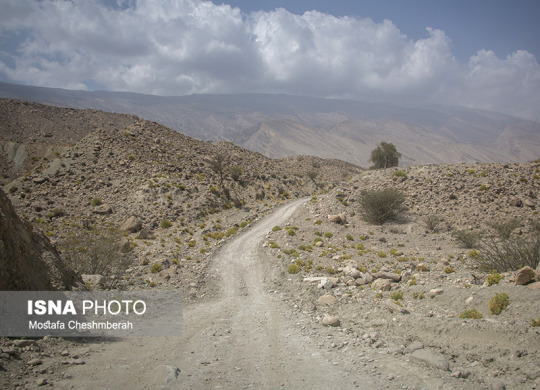
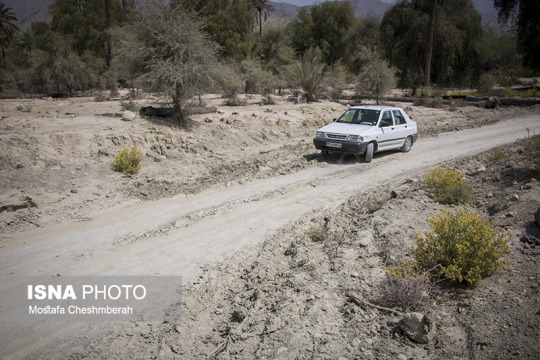
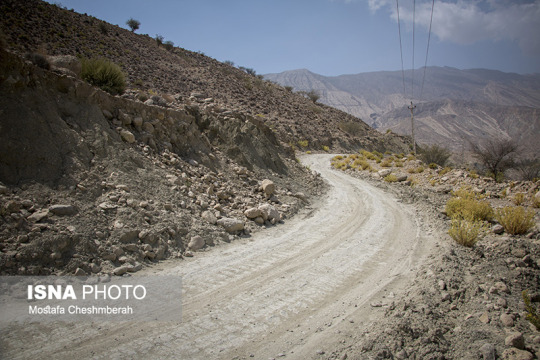
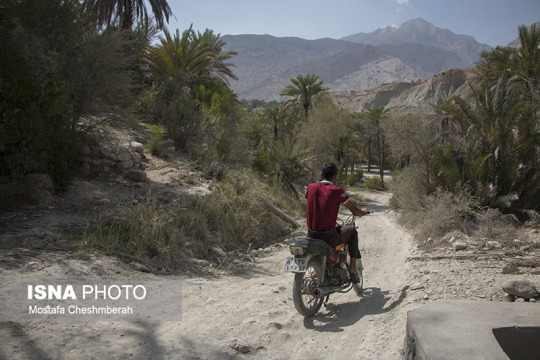
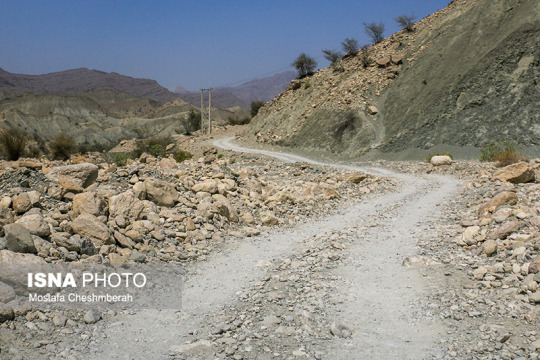



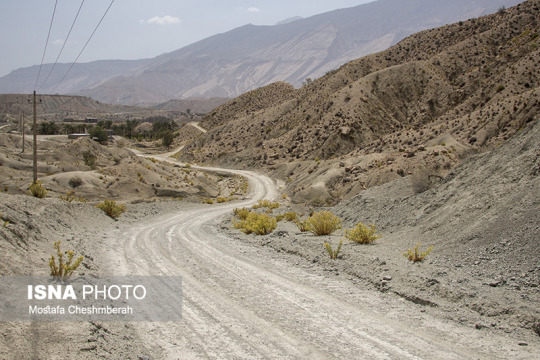

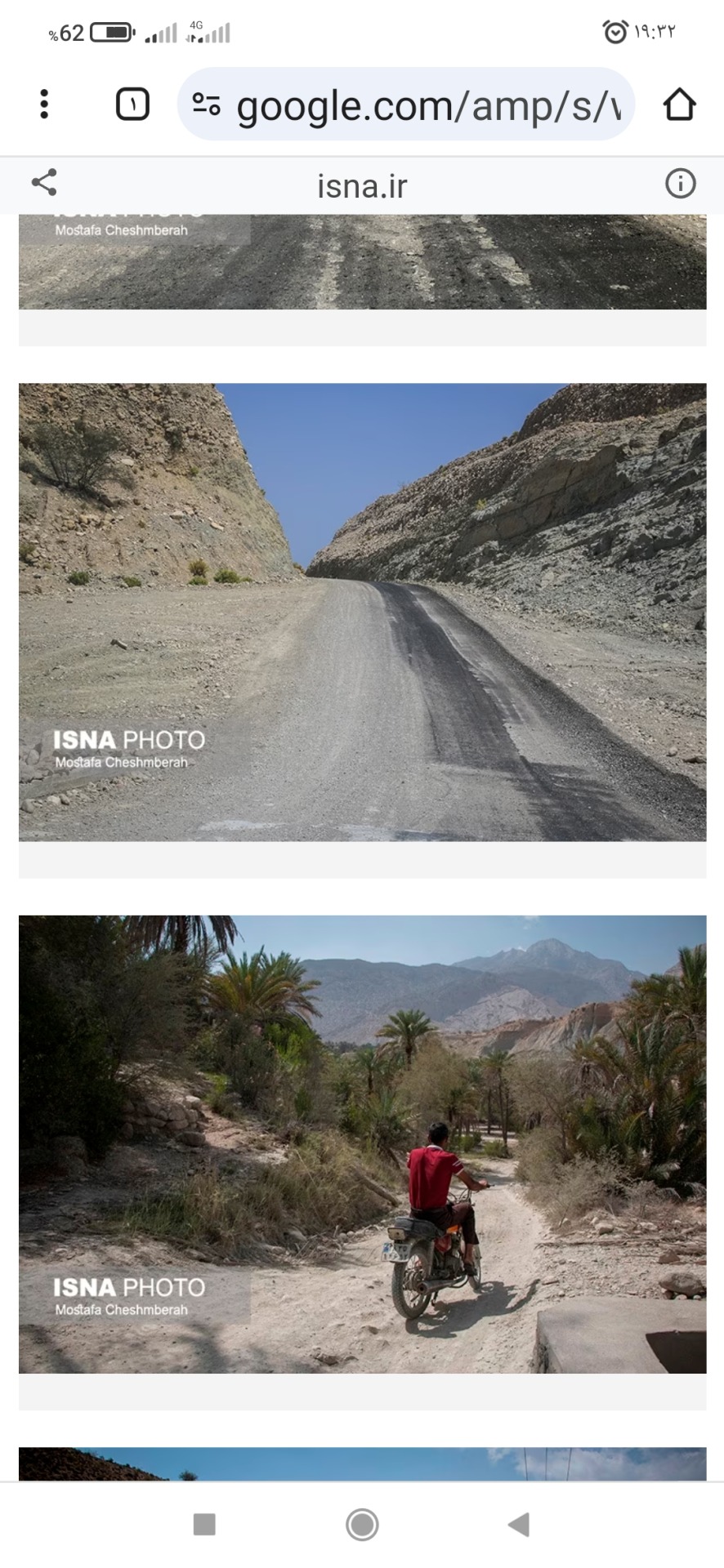
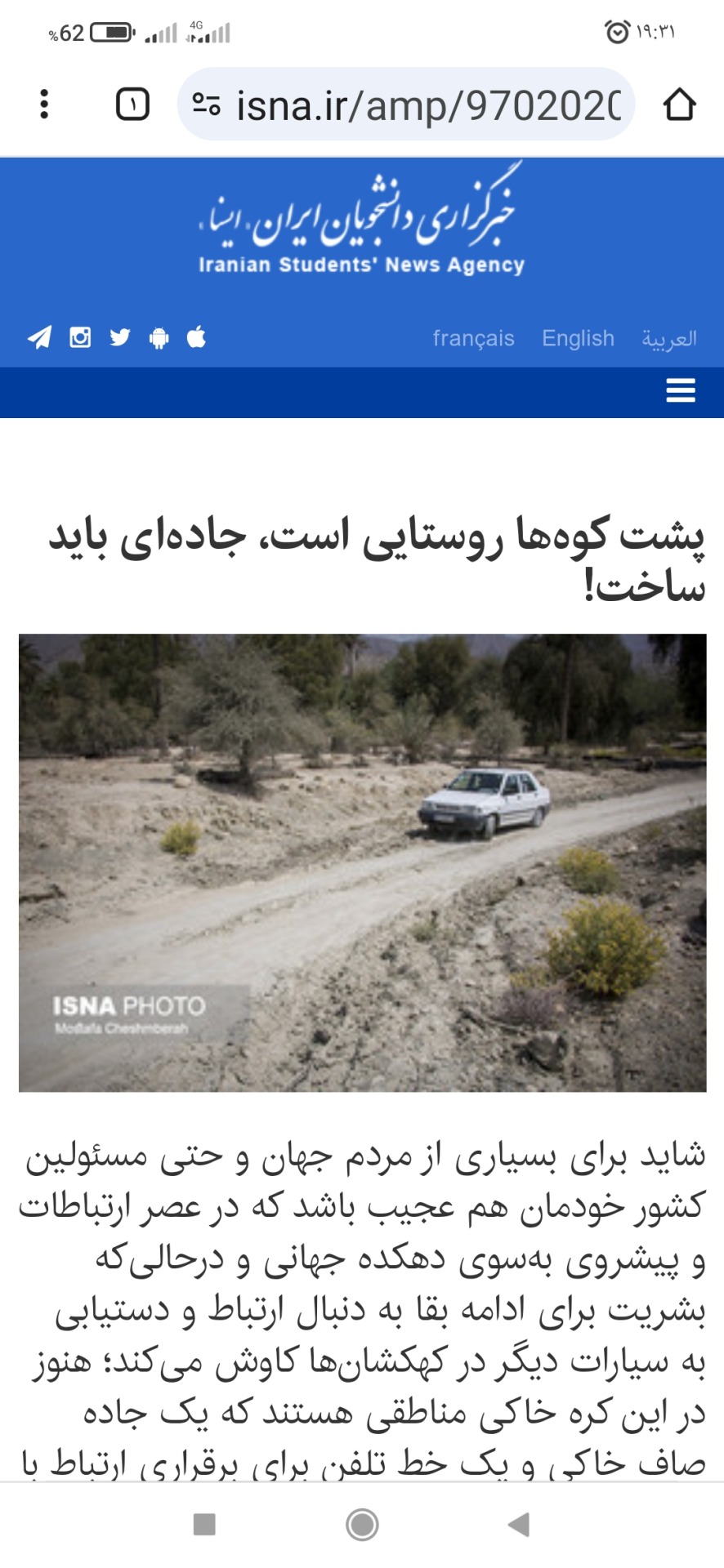
1 note
·
View note
Text
Connecting Afghanistan: Top Sea Freight Companies Facilitating International Trade
Introduction:
Afghanistan, a landlocked country in Central Asia, might not boast a coastline, but its trade and commerce heavily rely on maritime transportation. With its strategic location, Afghanistan depends on sea freight companies to facilitate the import and export of goods through neighboring countries.
The Importance of Sea Freight in Afghanistan:
Despite being landlocked, Afghanistan's economy relies significantly on maritime trade. Sea freight serves as a vital link connecting the country to international markets. Goods imported via sea routes typically arrive at neighboring ports, such as Karachi in Pakistan or Bandar Abbas in Iran, before being transported overland into Afghanistan. Likewise, exports from Afghanistan are shipped through these ports to destinations worldwide. Given the geographical constraints, efficient sea freight operations are crucial for the country's economic growth and development.

Challenges and Opportunities:
Despite the significant role played by sea freight companies in Afghanistan trade landscape, the industry faces several challenges. One of the primary hurdles is the landlocked nature of the country, which necessitates reliance on neighboring countries for access to seaports. This dependency can lead to delays, congestion, and increased costs associated with transshipment and customs clearance.
Moreover, security concerns, political instability, and infrastructure limitations pose additional challenges to the smooth functioning of sea freight companies in Afghanistan. The ongoing conflict in the region, coupled with regulatory hurdles and bureaucratic inefficiencies, can hinder the flow of goods and disrupt supply chains.
However, amidst these challenges, there are also opportunities for growth and innovation in the Afghan sea freight industry. The government's efforts to improve infrastructure, enhance trade facilitation, and promote regional cooperation present avenues for expansion and development. Sea freight companies that invest in technology, adopt best practices, and forge strategic partnerships can position themselves to capitalize on emerging opportunities and contribute to the country's economic prosperity.
Conclusion:
In conclusion, sea freight plays a vital role in Afghanistan's trade dynamics, connecting the landlocked nation to global markets and facilitating the movement of goods essential for economic growth. Despite facing challenges such as geographic constraints, security risks, and bureaucratic hurdles, sea freight companies continue to navigate these complexities and provide essential logistics solutions. By leveraging their expertise, embracing innovation, and capitalizing on emerging opportunities, sea freight companies in Afghanistan can contribute to sustainable development and prosperity in the region.
For more details visit our website: Sea Freight Companies in Afghanistan
Logistan Afghanistan
Contact: +93 79 444 4493
Address: Shar-e-Now, Haji Yaqoob Square, Kabul, Afghanistan
Email: [email protected]
Website: https://logistan.com/
#cargo company in afghanistan#afghan logistics#afghan shipping#shipping companies in afghanistan#transportation company in afghanistan#shipping companies in kabul#logistics companies in afghanistan#logistics companies in kabul#freight forwarding companies in afghanistan#list of logistics companies in afghanistan#Sea Freight Companies in Afghanistan
0 notes
Text
Konsumuan alkool të bërë vetë/ Helmohen dhe vdesin 8 persona, 51 të tjerë po trajtohen në spital
Konsumuan alkool të bërë vetë/ Helmohen dhe vdesin 8 persona, 51 të tjerë po trajtohen në spital
Një ngjarje e rëndë ka ndodhur në qytetin iranian të Bandar Abbas.
Sipas mediave të huaja konfirmohet se tetë persona kanë vdekur pasi kishin pirë alkool të bërë vetë.
Teksa lajmi është konfirmuar nga autoritetet, mjekët lokal theksojnë se 51 persona të tjerë po marrin trajtim në spital pasi janë helmuar nga alkool.
17 prej tyre ishin në gjendje kritike në terapi intensive, ndërsa 30 ishin në…

View On WordPress
0 notes
Photo

Shah Abbas the Great was the fifth and the greatest ruler of the Safavid Empire . Abbas the Great was born in Herat in 1571 and was the third son of Shah Mohammad Khodabanda. Shah Abbas became the Shah of Safavid Empire when he was only 17 years old. He consolidated his rule over the empire and took control of all matters. Abbas the Great reorganized his army and introduced reforms to discipline his army and strengthened his army by increasing the number of canons at his disposal. Abbas the Great defeated the Portuguese from Bahrain, took the city of Gamrun and renamed it Bandar e Abbas (Port of Abbas) in 1615 A.D and retook Hormuz from the Portuguese in 1622 A.D. Shah Abbas moved his Capital from Qazvin to Isfahan in 1598. Shah Abbas was a great builder and made Isfahan the pinnacle of Safavid architecture. Under Shah Abbas's reign carpet weaving and arts flourished in the Safavid Empire as its interest grew in the world. Abbas the Great was fluent in Turkish and Persian Abbas the Great died in Farahabad in his palace in 1629 due to poor health and is buried in Kashan, Iran. #shahabbas #abbasthegreat #safavid #safavidempire #iran #persia #isfahan #history #worldhistory #historical #iranhistory #persianhistory #worldhistory #abass #safavids #safaviddynasty #heritage #gunpowderempire #orient https://www.instagram.com/p/CHQBK0BHm0F/?igshid=bkju9d3zw77x
#shahabbas#abbasthegreat#safavid#safavidempire#iran#persia#isfahan#history#worldhistory#historical#iranhistory#persianhistory#abass#safavids#safaviddynasty#heritage#gunpowderempire#orient
2 notes
·
View notes
Photo

در Bandar `Abbas, Hormozgan, Iran https://www.instagram.com/p/BsusHZ0lO-e/?utm_source=ig_tumblr_share&igshid=1bg9werurkur7
1 note
·
View note
Photo

Heart of palm, Persian: (پنیر نخل) Heart of palm is a vegetable harvested from the inner core and growing bud of certain palm trees (notably coconut (Cocos nucifera), juçara (Euterpe edulis), Açaí palm (Euterpe oleracea), palmetto (Sabal spp.), and peach palm. Harvesting of many uncultivated or wild single-stemmed palms results in palm tree death (e.g. Geonoma edulis). Hearts of palm are rich in fiber, potassium, iron, zinc, phosphorus, copper, vitamins B2, B6, and C #veganfoodshare #veganfood #vegan #vegans #govegan #vegansofig #vegansofinstagram #veganshare #veganlife #veganliving #herbivore #plantbased #veganeats #animallovers #veganfoodlovers #persianvegan پنیر نخل به ماده ترد، سفیدرنگ، خوردنی و شیرین بخش میانی سر یا تاج درخت خرما گفته میشود. پنیر نخل در جهرم کچ و در قیروکارزین بوکوم و در استان هرمزگان کور و در بوشهر غاپ نامیده میشود. برای دستیابی به آن معمولاً سر درخت را میاندازند و برگها و لیفهای دور برگها را تا رسیدن به میانه و پنیر نخل، جدا میکنند. پنیر نخل در واقع ماده اولیه تشکیل تنه و برگهای نخل پیش از مرحله چوبی شدن است. پنیر نخل غنی از فیبر، پتاسیم، آهن، روی، فسفر، مس، ویتامین B2، B6 و C میباشد. #گیاهی #وگان #گیاهخواری (at Bandar-E `Abbas, Hormozgan, Iran) https://www.instagram.com/p/BpwtL2bDzgl/?utm_source=ig_tumblr_share&igshid=nx5aphx3g4kc
#veganfoodshare#veganfood#vegan#vegans#govegan#vegansofig#vegansofinstagram#veganshare#veganlife#veganliving#herbivore#plantbased#veganeats#animallovers#veganfoodlovers#persianvegan#گیاهی#وگان#گیاهخواری
3 notes
·
View notes
Text
In modo del tutto casuale si è recentemente scoperta una civiltà di 4 mila anni fa completamente sconosciuta. Se non fosse stato per alcuni oggetti che hanno cominciato ad apparire sul mercato nero dell'arte non se ne sarebbe mai parlato.
Era il 2001 quando alcuni magnifici ritrovamenti archeologici cominciarono ad apparire in vendita online e all'asta, c'erano sculture, vasi, recipienti in bronzo intarsiati, addirittura giochi da tavolo e anfore con decorazioni mai viste prima.

Alcuni di questi manufatti presentavano intarsi con lapis lazuli e altre pietre preziose, le raffigurazioni sui vasi e le anfore rappresentavano palmeti, coltivazioni, guerrieri che affrontavano grandi felini, e addirittura palazzi a forma di piramide e armi. Nessuno, però, capiva da dove venissero, e nemmeno a quale civiltà facessero riferimento.
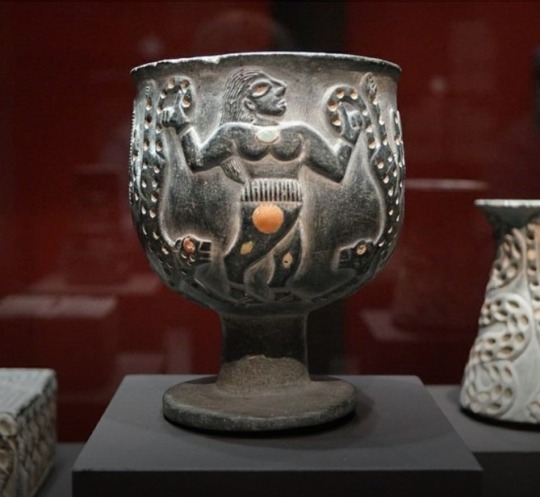

Inizialmente gli archeologi pensarono che fossero dei falsi riprodotti con grande maestria, ma perché mai dei falsari dovrebbero produrre reperti di una civiltà inesistente? Così cominciarono le indagini.
La maggior parte di questi reperti preveniva dall'Iran, lo si è scoperto tracciando le spedizioni fatte verso collezionisti e case d'aste nel 2001 e 2002: la polizia iraniana cominciò a quel punto a interrogare e arrestare trafficanti e commercianti del mercato nero e trovare qualche risposta. Le case d'asta non davano molte informazioni sui manufatti, anzi ne davano pochissime, ma indicavano la provenienza come "Asia centrale".
L'indagine coordinata dalla polizia iraniana scoprì che tutti questi oggetti venivano commerciati da Teheran, Bandar 'Abbas e Kerman e da lì spediti ad acquirenti di tutto il mondo. Ma la scoperta più importante fu che questi oggetti potevano essere ricondotti a una località nella valle del fiume Halil, a circa 40 chilometri a sud di Jiroft, una piccola e remota cittadina nel sud-est dell'Iran, nella regione del Balochistan.
Dal 2003 in poi vicino a Jiroft sono iniziati dei veri e propri scavi archeologici e scavando fino a 11 metri di profondità sono apparsi anche i palazzi a forma di piramide, quelli rappresentati sui manufatti.
La squadra di Madjidzadeh è riuscita a identificare una enorme necropoli, attualmente considerata la principale di tutta questa nuova civiltà, il sito è stato battezzato col nome di Mahtoutabad.
Alcune delle strutture architettoniche scoperte dagli archeologi hanno svelato un edificio di culto, e addirittura un'intera cittadella fortificata. Ma per studiare un complesso urbano grande molti ettari e reperire e studiare centinaia di oggetti e reperti archeologici ci vuole del tempo. La prima fase degli scavi è durata fino al 2007, ma ancora oggi non si è arrivati alla fine dei lavori.
Intanto si leggono i risultati dei primi studi: "la regione di Jiroft era un'importante insediamento urbano nella regione durante il terzo millennio a.C. Il suo centro era nella valle del fiume Halil dove grandi siti con architettura monumentale, aree di produzione artigianale considerevoli, quartieri e ampi cimiteri extramurali dominavano il paesaggio".
Khassia
0 notes
Text
Po sheshon edhe malet”. Dy tërmete të fuqishme “shkundin” Iranin
Po sheshon edhe malet”. Dy tërmete të fuqishme “shkundin” Iranin
Tërmetet e magnitudës 6.4 dhe 6.3 goditën në një thellësi prej 15 km në provincën e Hormozgan, sipas Qendrës Sizmiologjike të Iranit. Epiqendra është pranë qytetit bregdetar Bandar Abbas ndërsa lëkundjet janë ndjerë deri në Dubai, Katar, Bahrein dhe Arabinë Saudite.
Një 22 vjeçar vdiq pasi një shtyllë elektrike u rrëzua sipër tij, ndërsa ekipet kanë dalë në terren për të vlerësuar…
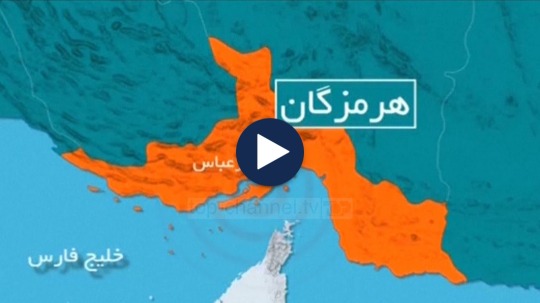
View On WordPress
0 notes
Photo

Free lesbian spaking stories https://sexypin.us/ksu #selfie #young #cute #teen #sexy #amateur Upskirt sexy secretary wallpaper Young spunk face Oma videos collection with grannies Big boob mail order brides, xxx video Diva wwe lesbian. Vip Renata Sex oral without condom, big Ass Big cock videos. Prostitutes in Bandar-e-Abbas Girl Escort in free, lesbian, spaking, stories
2 notes
·
View notes
Text
M 4.9 - 110 km NNE of Bandar Abbas, Iran
M 4.9 – 110 km NNE of Bandar Abbas, Iran
Time
2021-01-31 16:04:33 UTC
2021-01-31 16:04:33 UTC at epicenter
Location
28.111°N 56.709°E
Depth
10.00 km (6.21 mi)
View On WordPress
0 notes
Text
0 notes
Text
Navigating Success: A Guide to Sea Freight Companies in Afghanistan
Afghanistan, a landlocked country in Central Asia, relies heavily on efficient transportation networks to facilitate international trade. While air cargo is an expedient option, sea freight plays a crucial role in connecting Afghanistan to global markets
Strategic Location:
Afghanistan’s strategic location places it at the crossroads of South Asia, Central Asia, and the Middle East. This positioning makes sea freight a vital component of the country’s international trade. Sea freight companies in Afghanistan leverage major ports in neighboring countries, such as Karachi in Pakistan, Bandar Abbas in Iran, and the ports in the United Arab Emirates, to connect Afghan businesses to global markets.
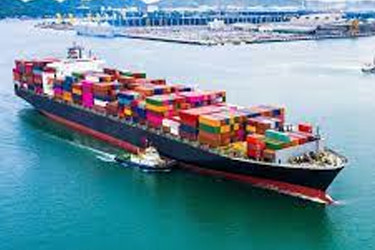
Diverse Shipping Services:
Successful sea freight companies in Afghanistan offer a diverse range of shipping services to cater to the varying needs of businesses. This includes full-container-load (FCL) and less-than-container-load (LCL) options, refrigerated containers for perishable goods, and specialized services for oversized cargo. These companies understand the importance of flexibility in meeting the diverse requirements of Afghan exporters and importers.
Customs Clearance Expertise:
Navigating customs regulations can be a complex task, and the best sea freight companies in Afghanistan have a deep understanding of the customs clearance process. They provide comprehensive support to their clients, ensuring that shipments comply with international trade regulations and pass through customs smoothly. This expertise helps in minimizing delays and ensuring the timely delivery of goods.
Secure and Efficient Logistics:
Security and efficiency are paramount in the sea freight industry. Reputable companies invest in state-of-the-art logistics solutions, including advanced tracking systems, secure packaging, and adherence to strict safety protocols. This not only protects the cargo during transit but also provides clients with real-time visibility into the status of their shipments.
Collaboration with Global Partners:
Building strong partnerships with global shipping lines and logistics providers is a key factor in the success of sea freight companies in Afghanistan. These collaborations enable seamless connectivity to major international trade routes, ensuring that Afghan businesses can reach their target markets efficiently. A well-established network of global partners enhances the reliability and competitiveness of sea freight services
Conclusion:
Sea freight companies in Afghanistan play a pivotal role in connecting the landlocked nation to global markets. Their success is driven by strategic location advantages, diverse shipping services, customs clearance expertise, secure logistics, global collaborations, and the integration of advanced technologies.
For more details visit our website: Sea Freight Companies in Afghanistan
Logistan Afghanistan
Contact: +93 79 444 4493
Address: Shar-e-Now, Haji Yaqoob Square, Kabul, Afghanistan
Email: [email protected]
#cargo company in afghanistan#afghan logistics#afghan shipping#transportation company in afghanistan#shipping companies in afghanistan#shipping companies in kabul#list of logistics companies in afghanistan#freight forwarding companies in afghanistan#logistics companies in afghanistan
0 notes
Text
Prove tecniche di guerra nel cyberspazio fra Israele e Iran

Israele vs Iran: il nuovo fronte di guerra è il cyberspazio. Un attacco hacker ha bloccato il porto di Shahid Rajaee sul Golfo Persico pochi giorno dopo l’incursione informatica nel sistema idrico israeliano. Gli esperti: è l’alba di un nuovo tipo di conflitto, senza regole.
Immaginate la vostra sorpresa quando, aprendo il rubinetto, non uscisse più l’acqua. O se la quantità di cloro la rendesse inutilizzabile per lavarsi o cucinare. Ma era proprio questo l’obbiettivo degli hacker iraniani che il 24 e 25 aprile hanno preso di mira il sistema idrico rurale dello stato di Israele. Causando la risposta di Gerusalemme, che si sarebbe concretizzata nell’attacco a un porto iraniano sullo stretto di Hormuz confermato dalla stessa autorità portuale. La notizia del contrattacco, circolata nella community dell'intelligence internazionale ha avuto una conferma da fonti governative americane, citate dal Washington Post.
Il blocco dei giorni scorsi del porto di Shahid Rajaee sullo stretto del Golfo Persico vicino a Bandar Abbas, traffico in tilt e container a terra, sarebbe stato causato proprio dalla rappresaglia informatica originata in Israele in seguito all’intrusione nei computer che gestiscono la distribuzione idrica e il trattamento delle acque reflue.
Secondo le autorità israeliane l’attacco, o meglio, la serie di attacchi condotti attraverso server americani ed europei avrebbe avuto scarso successo, ma i danni avrebbero potuto essere seri. Per questo all’inizio del mese il consiglio di sicurezza israeliano si è riunito per parlarne e l’attacco al porto potrebbe essere solo un primo avvertimento.
Un attacco del genere offre il vantaggio di poter partire da una nazione neutrale, facilitando la copertura delle tracce per evitare rappresaglie. Un attacco tradizionale, con aerei e cannoni è quasi impossibile da nascondere o rinnegare, ma nella guerra elettronica la distanza non è importante e gli attaccanti possono nascondersi facendo danni incalcolabili.
Immaginate quindi che cosa accadrebbe se un attacco informatico spegnesse i semafori della rete ferroviaria facendo scontrare due treni di pendolari o se l’attacco a un impianto chimico provocasse un disastro ecologico. Eventi simili sono già avvenuti, in Estonia, ad esempio, quando nel 2007 i russi hanno mandato il Paese in blackout.
In questo caso, Israele non ha rivendicato l’attacco, ma come ha osservato l’ex capo dei servizi segreti militari israeliani Amos Yadlin, il "cyberspace si è aggiunto a terra, mare e aria come campo di battaglia e se Israele ha contrattaccato è stato per chiarire che i civili devono restarne fuori e che l'Iran può essere colpito a sua volta".

Gli iraniani però lo sanno bene. Il ministro iraniano per la comunicazione e l’informatica Mohammad Javad Azari Jahromi ha dichiarato che nel 2019 la muraglia elettronica della Repubblica Islamica, detta Fortezza digitale o Dezhfa, ha sventato 33 milioni di cyberattacchi contro il Paese. L’Iran è inoltre considerato il finanziatore di diversi gruppi di hacker governativi, nome in codice Helix Kitten e OilRig, noti per azioni spionistiche e di sabotaggio informatico ai danni di aziende energetiche e organizzazioni finanziarie.
Per anni si è discusso di cosa accadrebbe se un’incursione informatica colpisse le infrastrutture fisiche delle nostre società anziché quelle immateriali, le comunicazioni, provocando panico nella popolazione o mettendone a rischio l’incolumità. Adesso, considerando gli attori in gioco, Israele e il suo arcinemico, l’Iran, questo singolo evento materializza lo spettro di un nuovo tipo di guerra.
Le regole della cyberwar
Una guerra ibrida, dove a un attacco informatica può corrispondere un attacco fisico, cinetico, si dice in gergo, e viceversa, quando un attacco informatico può innescare un bombardamento aereo come rappresaglia. Il motivo è presto detto: non esiste nessuna convenzione che stabilisca quale sia la risposta adeguata a un attacco informatico che produce vittime civili.
Ci si era provato al G7 di Lucca nel 2017 per evitare la proliferazione di cyberweapons, escalation militari e ritorsioni nel cyberspace, compresi gli attacchi alle infrastrutture critiche – sanità, energia, trasporti. I sette grandi avevano partorito una dichiarazione di carattere non vincolante per rispettare l’integrità di Internet e delle sue infrastrutture. Ma sempre in quell’occasione avevano ribadito che ogni Stato "può rispondere, in determinate circostanze, con contromisure proporzionate" a un attacco, anche con strumenti informatici per esercitare il diritto alla difesa individuale o collettiva “come riconosciuto dall'articolo 51 della Carta delle Nazioni Unite e in conformità con il diritto internazionale". Israele all’epoca non era della partita.

L’evento, secondo il professore Luigi Martino del Centro per la cybersecurity e lo studio delle relazioni internazionali dell’Università di Firenze, pone due questioni: "La prima è che gli attacchi cyber contro le infrastrutture critiche civili non sono più materia teorica per accademici, la seconda è il precedente stabilito dal governo israeliano di utilizzare una rappresaglia militare contro un altro Stato in risposta a un attacco cyber se confermato". - e continua – "Sarebbe anche la dimostrazione di un salto di qualità rispetto al limite dell’attribuzione delle responsabilità finora ritenuto insormontabile. Se la ricostruzione è corretta, la comunità internazionale viene posta di fronte al problema della mancanza di regole in grado di governare casi simili nel prossimo futuro".
Israele già risponde colpo su colpo a ogni missile, ad ogni attacco fisico contro il suo territorio, cosa succederebbe se decidesse di contrattaccare ad ogni incursione informatica? Il Paese di Gantz e Nethanyahu è tra i più potenti al mondo nella cyber guerra. Leader mondiale negli armamenti elettronici, dispone di forze informatiche d’elite come la famosa Unit 8200 e coltiva sul suo territorio centinaia di aziende nel campo della cybersecurity.
Ma Lior Tabansky, direttore del Centro di ricerche per la cybersecurity Blavatnik dell’università di Tel Aviv, ritiene che mentre l’individuazione dell’attacco a un sistema idrico secondario è indice della maturità informatica israeliana anche alla periferia del sistema è lapidario: "Usare le capacità cyber non ci introduce a un nuovo tipo di guerra. Il conflitto tra Iran e Israele è già uno scontro aperto e in larga parte di tipo tradizionale. Tutti sanno che all’Iran non conviene attaccare Israele, neanche nel cyberspace".
Read the full article
#cyberattacchi#cyberspace#cyberspazio#cyberwar#cyberweapons#hacker#hackergovernativi#iran#Israele#sicurezzainformatica#tecnologia
0 notes
Text
New story in Politics from Time: The Iran Plane Crash Could Be the Latest in a Long History of Accidental Shoot-Downs
A Ukrainian International Airlines flight that crashed in Iran Wednesday, killing all 176 people on board, was likely shot down by Iranian forces, U.S. intelligence suggests.
While the crash of Flight 752 is a tragedy, the likely cause of the crash might not be entirely surprising, given the flurry of threats and tit-for-tat attacks exchanged between the Untied States and Iran over the last week. While civilian air travel is considered to be very safe, there is a long history of civilian aircraft being accidentally shot down in times of conflict.
“I don’t think it’s all that unusual,” Arnold Barnett, an aviation safety expert and a Professor of Statistics at the MIT Sloan School of Management, tells TIME. “I think given that war so often involves aerial fighting these days, you could argue that planes should be careful.”
In fact, both Ukraine and Iran have their own tragic histories of civilian aircraft being shot down during geopolitical conflicts. In July 2014, 298 people were killed when Malaysian Airlines Flight 17 was shot down in Ukraine’s Donetsk region by Russian separatists. In 1988, 290 people were killed when a U.S. ship shot down Iran Air Flight 655.
Barnett argues that airlines should err on the side of caution when considering the threat of sending flights through conflict zones — and urges civilian passengers to pay attention to warnings from the U.S. State Department and elsewhere.
“Planes being shot down accidentally—this is not something that’s never happened. And especially in wartime situations where you think it might happen, of course I think people should be thinking about it,” Barnett says.
Here’s what you need to know about some of the deadliest attacks on civilian aircraft.
Libyan Arab Airlines Flight 114 (Feb. 21, 1973)
More than 100 people were killed when a Libyan flight traveling from Tripoli via Benghazi to Cairo was shot down by Israeli fighter planes and crashed into the Sinai desert. The aircraft was about 100 miles off course, Major John T. Phelps II wrote in the U.S. Armed Forces journal Military Law Review.
Israel claimed the plane had entered Israeli airspace in Egyptian territory occupied by Israeli, and that the Israeli planes had directed the aircraft to land, but that the plane did not respond.
A co-pilot who survived the crash later said the plane had known that the Israeli planes had asked them to land, but they had decided not to because of the bad relationship between Libya and Israel, although the inflight record indicated that the pilot thought he was in Egypt and that the other planes were Egyptian, Phelps wrote.
Phelps asserted that the Libyan jet’s actions were likely viewed as “hostile” by the Israeli forces.
“The situation in the Sinai was anything but normal. Relations between Egypt, Libya, and Israel were tense and the threat of war was ever-present,” Phelps wrote.
Korean Air Lines Flight 007 (Sept. 1, 1983)
During some of the tensest moments of the Cold War, a Soviet fighter plane shot down Korean Air Lines Flight 007, which had been traveling from New York to Seoul via Anchorage, Alaska. All 269 people on board, including U.S. Congressman Larry McDonald, were killed. The flight had traveled more than 300 miles off course and ventured into Soviet airspace, where it was shot down near Moneron Island west of Sakhalin Island. It crashed into the Sea of Japan.
The Soviets asserted that the aircraft had been sent on a spy mission, and that the plane had deliberately been sent into Soviet airspace, the New York Times reported. The U.S. denied that assertion.
Iran Air Flight 655: (July 3, 1988)
In the midst of the Iran-Iraq war, the U.S. and Iran had just faced off in Operation Praying Mantis, a daylong naval battle between American forces and Iran in the Persian Gulf, which had been triggered by a U.S. ship striking an Iranian mine.
U.S. Navy missile cruiser USS Vincennes shot down Iran Air Flight 655 traveling from Bandar-e Abbas, Iran, to Dubai, UAE, as it traveled over the Strait of Hormuz, a strait between the Persian Gulf and the Gulf of Oman. All 290 people on board died. The passenger plane, which was traveling in Iranian airspace, had been misidentified as a fighter jet, according to the United States.
While the U.S. asserted that the plane was outside the civilian corridor, this proved to be untrue. The U.S. government later apologized and after eight years said it would compensate the victims’ families, according to the Associated Press.
Siberia Airlines Flight 1812: (October 4, 2001)
Not all airliner shoot downs have occurred during times of war. The Ukrainian Air Force shot down Siberia Airlines Flight 1812 over the Black Sea in an apparent accident, killing 78 crew and passengers. The flight had been en route from Israel to Novosibirsk, Russia, and many of the passengers were Russian-born Israelis, according to the Associated Press.
Ukraine’s military initially denied responsibility for the incident, but later admitted that an errant missile from a military exercise on the Crimean peninsula could have cause the crash. Ukraine’s Defense Minister, Oleksander Kuzmuk, admitted that Ukrainian forces were involved and apologized to the victims’ friends and families.
Malaysia Airlines Flight 17: (July 17, 2014)
In 2014, Ukraine was again the site of tragedy—this time, in the midst of conflict with Russia. Russian separatists shot down Malaysia Airlines Flight 17 as it traveled over the Donetsk region in Eastern Ukraine, killing all 298 people onboard. A subsequent investigation found that the plane had been downed by a warhead launched in eastern Ukraine by a Buk missile system.
The Public Prosecution Service of the Netherlands announced last June that it will prosecute four suspects—all affiliated with Russian separatists—for causing the crash and murdering the people on board.
Russian officials have denied playing a role in the crash.
By Tara Law on January 09, 2020 at 10:13PM
0 notes
Text
PEPE ESCOBAR: MAGA Misses the Eurasia Train!
While China and Russia solidify their economic and political alliance, the U.S. is missing an historic chance to join a multilateral world, clinging instead to military empire, argues Pepe Escobar.
By Pepe Escobar, in Milan, Italy
February 4, 2019
We should know by now that the heart of the 21stCentury Great Game is the myriad layers of the battle between the United States and the partnership of Russia and China.
Even the U.S. National Defense Strategy says so: “The central challenge to U.S. prosperity and security is the reemergence of long-term, strategic competition by … revisionist powers.” The recently published assessment on U.S. defense implications of China’s global expansion says so too.
The clash will frame the emergence of a possibly new, post-ideological, strategic world order amidst an extremely volatile unpredictability in which peace is war and an accident may spark a nuclear confrontation.
The U.S. vs. Russia and China will keep challenging the West’s obsession in deriding “illiberalism,” a fearful, rhetorical exercise that equates Russian democracy with China’s one party rule, Iran’s demo-theocracy and Turkey’s neo-Ottoman revival.
It’s immaterial that Russia’s economy is one-tenth of China’s. From boosting trade that bypasses the U.S. dollar, to increasing joint military exercises, the Russia-China symbiosis is poised to advance beyond political and ideological affinities.
China badly needs Russian know-how in its military industry. Beijing will turn this knowledge into plenty of dual use, civilian-military innovations.
The long game indicates Russia and China will break down language and cultural barriers to lead Eurasian integration against American economic hegemony backed by military might.
One could say the Eurasian century is already upon us. The era of the West shaping the world at will (a mere blip of history) is already over. This is despite Western elite denials and fulminations against the so-called “morally reprehensible,” “forces of instability” and “existential threats.”
Standard Chartered, the British financial services company, using a mix of purchasing power exchange rates and GDP growth, has projected that the top five economies in 2030 will be China, the U.S., India, Japan and Russia. These will be followed by Germany, Indonesia, Brazil, Turkey and the UK. Asia will extend its middle class as they are slowly killed off across the West.
Hop on the Trans-Eurasia Express
A case can be made that Beijing’s elites are fascinated at how Russia, in less than two decades, has returned to semi-superpower status after the devastation of the Yeltsin years.
That happened to a large extent due to science and technology. The most graphic example is the unmatched, state-of-the-art weaponry unveiled by President Vladimir Putin in his March 1, 2018 speech.
In practice, Russia and China will be advancing the alignment of China’s New Silk Roads, or Belt and Road Initiative (BRI), with Russia’s Eurasia Economic Union (EAEU).
There’s ample potential for a Trans-Eurasia Express network of land and maritime transport corridors to be up and running by the middle of next decade, including, for instance, road and railway bridges connecting China with Russia across the Heilongjiang River.

Heilongjiang or Armur river separating China and Russia. (Wikimedia)
Following serious trilateral talks involving Russia, India and Iran last November, closer attention is being paid to the International North-South Transportation Corridor (INSTC), a 7,200-km long lane mixing sea and rail routes essentially linking the Indian Ocean with the Persian Gulf through Iran and Russia and further on down the road, to Europe.
Imagine cargo transiting from all over India to the Iranian port of Bandar Abbas, then overland to Bandar Anzali, an Iranian port on the Caspian Sea, and then on to the Russian southern port of Astrakhan, and after that to Europe by rail. From New Delhi’s point of view, that means shipping costs reduced by up to 40 percent, and Mumbai-to-Moscow in only 20 days.
Down the line, INSTC will merge with BRI – as in Chinese-led corridors linked with the India-Iran-Russia route into a global transport network.
This is happening just as Japan is looking at the Trans-Siberian Railway – which will be upgraded throughout the next decade – to improve its connections with Russia, China and the Koreas. Japan is now a top investor in Russia and at the same time very much interested in a Korea peace deal. That would free Tokyo from massive defense spending conditioned by Washington’s rules. The EAEU free trade agreements with ASEAN can be added to that.
Especially over these past four years, Russia has also learned how to attract Chinese investment and wealth, aware that Beijing’s system mass-produces virtually everything and knows how to market it globally, while Moscow needs to fight every block in the book dreamed up by Washington.
The Huawei-Venezuela “Axis of Evil”

Metal Truss Railroad Bridge (Kama River, near Perm city). Early color photograph from Russia, created by Sergei Mikhailovich Prokudin-Gorskii as part of his work to document the Russian Empire from 1909 to 1915. (Wikimedia)
While Washington remains a bipartisan prisoner to the Russophobic Platonic cave – where Cold War shadows on the wall are taken as reality – MAGA is missing the train to Eurasia.
A many-headed hydra, MAGA, stripped to the bone, could be read as a non-ideological antidote to the Empire’s global adventurism. Trump, in his non-strategic, shambolic way, proposed at least in theory the return to a social contract in the U.S. MAGA in theory would translate into jobs, opportunities for small businesses, low taxes and no more foreign wars.
It’s nostalgia for the 1950s and 60s before the Vietnam quagmire and before “Made in the USA” was slowly and deliberately dismantled. What’s left are tens of trillions of national debt; a quadrillion in derivatives; the Deep State running amok; and a lot of pumped up fear of evil Russians, devious Chinese, Persian mullahs, the troika of tyranny, the Belt and Road, Huawei, and illegal aliens.
More than a Hobbesian “war of all against all” or carping about the “Western rules-based system” being under attack, the fear is actually of the strategic challenge posed by Russia and China, which seeks a return to rule by international law.
MAGA would thrive if hitched to a ride on the Eurasia integration train: more jobs and more business opportunities instead of more foreign wars. Yet MAGA won’t happen – to a large extent because what really makes Trump tick is his policy of energy dominance to decisively interfere with Russia and China’s development.
The Pentagon and the “intel community” pushed the Trump administration to go after Huawei, branded as a nest of spies, while pressuring key allies Germany, Japan and Italy to follow. Germany and Japan permit the U.S. to control the key nodes in the extremities of Eurasia. Italy is essentially a large NATO base.
The U.S. Department of Justice requested the extradition of Huawei CFO Meng Wanzhou from Canada last Tuesday, adding a notch to the Trump administration’s geopolitical tactic of “blunt force trauma.”
Add to it that Huawei – based in Shenzhen and owned by its workers as shareholders – is killing Apple across Asia and in most latitudes across the Global South. The real the battle is over 5G, in which China aims to upstage the U.S., while upgrading capacity and production quality.
The digital economy in China is already larger than the GDP of France or the UK. It’s based on the BATX companies (Baidu, Alibaba, Tencent, Xiaomi), Didi (the Chinese Uber), e-commerce giant JD.com and Huawei. These Big Seven are a state within a civilization – an ecosystem they’ve constructed themselves, investing fortunes in big data, artificial intelligence (AI) and the internet. American giants – Facebook, Instagram, Twitter and Google – are absent from this enormous market.
Moreover, Huawei’s sophisticated encryption system in telecom equipment prevents interception by the NSA. That helps account for its extreme popularity all across the Global South, in contrast to the Five Eyes (U.S., UK, Canada, Australia, New Zealand) electronic espionage network.
The economic war on Huawei is also directly connected to the expansion of BRI across 70 Asian, European and African nations, constituting a Eurasia-wide network of commerce, investment and infrastructure able to turn geopolitical and geo-economic relations, as we know them, upside down.
Greater Eurasia Beckons
Whatever China does won’t alter the Deep State’s obsession about “an aggression against our vital interests,” as stated by the National Defense Strategy. The dominant Pentagon narrative in years to come will be about China “intending to impose, in the short term, its hegemony in the Indo-Pacific region, and catch the United States off-guard in order to achieve future global pre-eminence.” This is mixed with a belief that Russia wants to “crush NATO” and “sabotage the democratic process in Crimea and Eastern Ukraine.”

The Karakoram Highway connecting Pakistan and China, sometimes referred to as the English Wonder of the World. (Wikimedia)
During my recent travels along the northern part of the China-Pakistan Economic Corridor (CPEC), I saw once again how China is upgrading highways, building dams, railways and bridges that are useful not only for its own economic expansion but also for its neighbors’ development. Compare it to U.S. wars – as in Iraq and Libya – where dams, railways and bridges are destroyed.
Russian diplomacy is all but winning the New Cold War — as diagnosed by Prof. Stephen Cohen in his latest book, War with Russia: From Putin and Ukraine to Trump and Russiagate.
Moscow mixes serious warnings with diverse strategies, such as resurrecting the South Stream gas pipeline to supply Europe as an extension of Turk Stream after the Trump administration also furiously opposed the Nord Stream 2 pipeline with sanctions on Russia. Meanwhile, Moscow ramps up energy exports to China.
The advance of the Belt and Road Initiative is linked to Russian security and energy exports, including the Northern Sea Route, as an alternative future transportation corridor to Central Asia. Russia emerges then as the top security guarantee for Eurasian trade and economic integration.
Last month in Moscow, I discussed Greater Eurasia– by now established as the overarching concept of Russian foreign policy – with top Russian analysts. They told me Putin is on board. He referred to Eurasia recently as “not a chessboard or a geopolitical playground, but our peaceful and prosperous home.”
Needless to say, U.S. think tanks dismiss the idea as “abortive”. They ignore Prof. Sergey Karaganov, who as early as mid-2017 was arguing that Greater Eurasia could serve as a platform for “a trilateral dialogue on global problems and international strategic stability between Russia, the United States and China.”
As much as the Beltway may refuse it, “The center of gravity of global trade is now shifting from the high seas toward the vast continental interior of Eurasia.”
Beijing Skirts the Dollar
Beijing is realizing it can’t meet its geo-economic goals on energy, security, and trade without bypassing the U.S. dollar.
According to the IMF, 62 percent of global central bank reserves were still held in U.S. dollars by the second quarter of 2018. Around 43 per cent of international transactions on SWIFT are still in U.S. dollars. Even as China, in 2018, was the single largest contributor to global GDP growth, at 27.2 percent, the yuan still only accounts for 1 percent of international payments, and 1.8 per cent of all reserve assets held by central banks.

The author at the Khunjerab pass, China-Pak border, on New Silk Road overdrive.
It takes time, but change is on the way. China’s cross-border payment network for yuan transactions was launched less than four years ago. Integration between the Russian Mir payment system and Chinese Union Pay appears inevitable.
Bye Bye Drs. K and Zbig
Russia and China are developing the ultimate nightmare for those former shamans of U.S. foreign policy, Henry Kissinger and the late Zbigniew “Grand Chessboard” Brzezinski.
Back in 1972 Kissinger was the mastermind – with logistical help from Pakistan – of the Nixon moment in China. That was classic Divide and Rule, separating China from the USSR. Two years ago, before Trump’s inauguration, Dr. K’s advice dispensed at Trump Tower meetings consisted of a modified Divide and Rule: the seduction of Russia to contain China.
The Kissinger doctrine rules that, geopolitically, the U.S. is just “an island off the shores of the large landmass of Eurasia.” Domination “by a single power of either of Eurasia’s two principal spheres – Europe or Asia – remains a good definition of strategic danger for America, Cold War or no Cold War,” as Kissinger said. “For such a grouping would have the capacity to outstrip America economically and, in the end, militarily.”
The Zbig doctrine ran along similar lines. The objectives were to prevent collusion and maintain security among the EU-NATO vassals; keep tributaries pliant; keep the barbarians (a.k.a. Russians and allies) from coming together; most of all prevent the emergence of a hostile coalition (as in today’s Russia-China alliance) capable of challenging U.S. hegemony; and submit Germany, Russia, Japan, Iran, and China to permanent Divide and Rule.
Thus the despair of the current National Security Strategy, forecasting China displacing the United States “to achieve global preeminence in the future,” through BRI’s supra-continental reach.
The “policy” to counteract such “threats” is sanctions, sanctions, and more unilateral sanctions, coupled with an inflation of absurd notions peddled across the Beltway – such as that Russia is aiding and abetting the re-conquest of the Arab world by Persia. Also that Beijing will ditch the “paper tiger” “Made in China 2025” plan for its major upgrade in global, high-tech manufacturing just because Trump hates it.
Once in a blue moon a U.S. report actually gets it right, such as in Beijing speeding up an array of BRI projects; as a modified Sun Tzu tactic deployed by President Xi Jinping.
At the June 2016 Shangri-La Dialogue in Singapore, Professor Xiang Lanxin, director of the Centre of One Belt and One Road Studies at the China National Institute for SCO International Exchange and Judicial Cooperation, defined BRI as an avenue to a “post-Westphalian world.” The journey is just beginning; a new geopolitical and economic era is at hand. And the U.S. is being left behind at the station.

Pepe Escobar, a veteran Brazilian journalist, is the correspondent-at-large for Hong Kong-based Asia Times. His latest book is 2030.
0 notes
Photo

اشک رازیست،لبخندرازیست،عشقرازیست، اشکآنشب لبخند عشقم بود. قصه نیستم که بگویی، نغمه نیستم که بخوانی،صدانیستم که بشنوی،یاچیزیچنانکه ببینی،یاچیزیچنانکهبدانی..... من درد مشترکم،مرافریاد کن. درختبا جنگل سخنمیگوید،علفباصحرا،ستارهباکهکشان ومن باتو سخن میگویم. نامترابهمنبگو،دستترابهمنبده،حرفترابهمن بگو،قلبترابهمنبده،منریشههایتورادریافتم، بالبانتبرایهمهلبهاسخنگفتمودستهایتبا دستانمنآشناست.🌻 #شاملو #شبانه #روزهای_خوب #خداوند (at Bandar-E `Abbas, Hormozgan, Iran) https://www.instagram.com/p/Bo7t1pXgrve/?igshid=lr3g2c40kcgv
0 notes